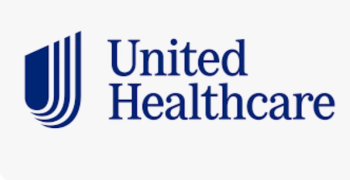
3 Steps for BPCI Advanced Success
CMS’ most popular episode-based payment initiative requires careful internal analysis of costs and competencies, and recognition of improvement levers.
The Bundled Payments for Care Improvement Advanced (BPCI Advanced) program, announced in January 2018, is the latest in a series of bundled payment initiatives from CMS to tackle the problem of Medicare insolvency. BPCI Advanced is the most popular initiative to date, attracting more participants than any other bundled payment program.
Participation remains robust despite a 16% drop in participation (including a 14% drop for hospitals and 19% for physician practices). CMS has announced that a
The popularity of BPCI Advanced is with good reason: A
That is why conducting a careful accounting of potential costs and benefits is one of three steps for success in this new bundled payment program-along with cataloging core competencies to determine which levers will help improve performance in the program.
Step 1: Decide if the potential ROI of BPCI Advanced makes sense for your organization
In total, BPCI Advanced includes 29 inpatient and three outpatient bundles triggered by the submission of a claim to Medicare Fee for Service (FFS) for the inpatient hospital stay or outpatient procedure, respectively. CMS will set the target price for each episode using claims-based historical data and risk-adjustment models to account for variation in the clinical episode’s standardized amounts. The agency will then calculate a benchmark price and discount it by 3%.
For example, sepsis data released by CMS for 2,899 providers in January 2019 delineates target prices ranging from a minimum of $15,065 to a maximum of $108,403 (mean: $34,035 and median: $31,328). With such a wide range of target prices, organizations would be remiss to not consider the economic opportunity in including BPCI Advanced in their value-based care roadmaps.
Organizations will first need to conduct a preliminary diagnostic that profiles facility- and bundle-level performance across the entire hospital or health system. Comparing historical spend per episode in the context of the individual target price for each clinical episode will deliver a clearer picture for actionable areas for improvement. The key decision from the preliminary diagnostic should be weighing the size of the opportunity against an organization’s internal hurdle rate. Once assessed, organizations should submit their non-binding applications to receive the unprocessed claims data from CMS for a more detailed evaluation.
Transitioning to the due-diligence phase, organizations should separate the historical spend per episode into its various components (total cost per episode, inpatient cost per episode, and post-acute care cost per episode) to better match opportunities to the set of levers for improvements, such as length of stay initiatives, preferred post-acute care network strategy, readmissions management, and others. Simultaneously, layering on physician- and market-level intelligence ensures a holistic review and increases the probability of program success.
Once organizations have a clear forecast of economic success in the program, ongoing monitoring and evaluation with an analytics platform-including physician and hospital profiling and scorecards and episode exclusions-will significantly reduce the burden on program administrators.
Step 2: Catalog core competencies
Taking stock of an organization’s strengths, weaknesses, opportunities, and threats (SWOT analysis) is a good exercise in cataloging the organization’s core competencies at a high level. Looking inward, a deeper dive into clinical and structural expertise will enable organizations to understand where they may need to bolster their core operations. A conservative accounting of core competencies at a department and specific function level for decisions around clinical episode selection, bundle portfolio construction, and quality management is also critical.
Related:
In this cataloging step, organizations will likely discover opportunities to reduce internal variation among care teams practicing within a location. For example, length of stay of certain surgeons’ patients may be higher than others because the pain management protocol used does not result in early ambulation of patients. Administering physical therapy on the day of surgery is one of the main drivers behind a shorter length of stay.
An effective process to evaluate patient needs for sub-acute care (i.e., patient risk stratification) is also a core competency. This is because many skilled nursing facilities (SNFs) will default to sending patients with developing medical conditions back to the hospital emergency department and ultimately back into a hospital bed, which ends up costing more in the long term than continued inpatient sub-acute care.
Further, strong case management and care coordination competencies will ensure an optimal patient experience and outcome. Diligent post-discharge follow-up and regular check-ins with the patient will allow for timely evaluation and documentation of their progress and recovery. Further, engagement with the patients around their medical conditions, expected symptoms and medication adherence equips them to take control of their recovery and can lead to fewer readmissions.
Step 3: Recognize levers for performance improvement
There are five main levers to improving performance in BPCI Advanced:
- Inpatient improvements
- Patient risk stratification and discharge planning
- Decreasing post-acute care utilization
- Selecting top-performing post-acute care providers
- Better readmissions management
The cornerstone of BPCI Advanced is to ensure a strong clinical support structure for participating patients. The clinical work begins at the bedside, where patients are educated about the additional support that is available to them to help manage their condition. With a bedside evaluation, patients may be stratified into various risk categories depending on their clinical needs. Meanwhile, codifying the workflows further facilitates the right interventions.
Decreasing post-acute care utilization is also a vital part of BPCI Advanced improvement, because a significant part of episode spending is based on inpatient rehab facilities (IRFs) and SNFs. As such, BPCI Advanced clinical teams should round on patients admitted to post-acute care facilities to ensure efficient patient discharge, follow-up and interventions. Many SNF teams will readily refer patients back to the ED without a change in the clinical process. A patient who has a spike in temperature, for example, who would otherwise be referred back to the ED can instead be treated by an on-hand clinical team with privileges-or even via a 24/7 triage line.
The new normal
Given CMS’ history with alternative payment models, it is inevitable that hospitals and health systems will soon be responsible for the entire care cycle of a given patient. BPCI Advanced posits one such avenue for organizations to proactively lead this transformation to value-based care. It’s highly likely that these types of payment programs will eventually become mandatory. Organizations that begin building their competencies in this area will strengthen and sustain their competitive edge in the long run.
Aditya “AG” Govil is director of business development at
Newsletter
Get the latest industry news, event updates, and more from Managed healthcare Executive.

















































